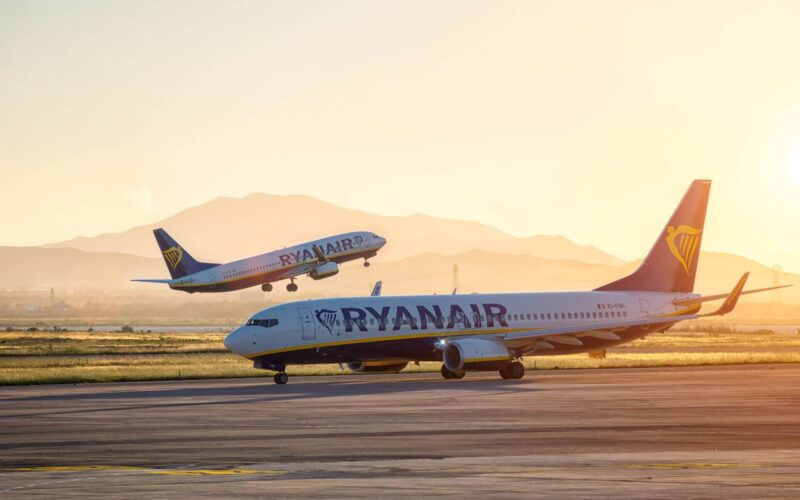An incident report, released by the Spanish Civil Aviation Accident and Incident Investigation Commission (CIAIAC), revealed how two Ryanair Boeing 737 aircraft almost collided mid-air at 34,000 feet in Northern Spain on October 2, 2018. The accident was prevented by a controller from a neighboring air traffic control sector, namely Bordeaux, France.
The two Ryanair aircraft involved (registered as EI-FRY and EI-DWW) both departed from two Spanish airports, namely Santiago–Rosalía de Castro Airport (SCQ) and Seville Airport (SVQ). The EI-FRY was heading towards the south of the country to Palma de Mallorca Airport (PMI), while the EI-DWW was on its way towards Toulouse, France. The two aircraft were carrying 184 and 160 people, respectively, with four experienced pilots at each control column of the pair of 737s.
According to Spanish investigators, twelve minutes prior to the loss of separation incident, at 14:45 PM local time (UTC +2) both Ryanair aircraft were controlled by the Madrid Area Control Center (ACC) PAL sector, cruising at FL340 (34,000 feet). Three minutes before the incident, the Toulouse-bound aircraft was transferred to the ZGZ sector, while the PMI-bound aircraft remained under the command of PAL. Both aircraft retained FL340, as they headed for a mid-air collision at Air Traffic Control (ATC) reporting point GOSVI, above Navarre, Spain.
Two minutes before, Bordeaux, France ACC controller alerted Madrid’s PAL ACC controller of the potential mid-air collision. “Judging by his reply, the PAL sector controller had not detected it,” read the CIAIAC’s report.
Conflicting instructions
However, the second Ryanair Boeing 737 remained in the area controlled by PAL, which resulted in further confusion as PAL’s controller was not yet aware of the potential conflict. The problem was further exacerbated due to the fact that the Conflict alert prediction (STCA PAC) alert did not appear for either of the aircraft for air traffic controllers. After this and two other subsequent incidents, ENAIRE, the Spanish air traffic control organization, identified and corrected the STCA system shortcoming.
Controllers at PAL and ZGZ sectors gave out conflicting instructions to both aircraft, read the report. PAL’s controller asked a colleague from ZGZ to lower the altitude of the aircraft it still had control of, to which ZGZ responded affirmatively. Both controllers asked Ryanair pilots to descend, rather than keeping one aircraft at the same flight level.
Subsequently, both controllers and the flight crew of the EI-FRY detected a conflict. The pilots of the south-bound 737 asked the ATC to confirm their instructions, as the Traffic collision avoidance system (TCAS) on their flight deck showcased the second aircraft descending as well. Three separate conversations happened a minute before the closest distance between the two aircraft. PAL’s controller was saying that his aircraft was already descending, while ZGZ’s controller told his counterpart that he would tell his aircraft to descend.
“Can you confirm it is descend FL330?” asked the pilots who identified the potential altitude conflict on their TCAS display.
Shortly after, both controllers once again gave out identical instructions – to maintain FL340. Luckily, the Toulouse-destined aircraft began its descent, losing 175 feet of altitude.
The two Irish-registered aircraft violated European Union Aviation Safety Agency (EASA)’s minimal separation limits of 5 nautical miles horizontally and 1,000 feet vertically at 14:57 PM local time (UTC +2), as they were only separated by 2.3 nautical miles horizontally and 334 feet vertically, indicated Spanish accident investigators. No passengers or crew members sustained any injuries on board.
CIAIAC findings concluded that the PAL sector controller failed to properly identify the conflict, including the fact that controllers from both control sectors issued similar instructions to both aircraft, contradicting their own dialogue. Thus, ATC instructions did not prevent the loss of separation.
“Contributing to the incident is the improper handling of the conflict by the controllers in both sectors, who issued similar instructions to the two aircraft, contrary to what had been agreed previously,” the report stated.

